Things are different in London. His Viognier 2021 is in high demand at his UK importer Hallgarten & Novum’s annual portfolio tasting.
“It’s the one I’ve poured the quickest,” Andrew (below) beams. “People keep asking for it – I love that here people are curious about it.
“It’s fun and unexpected.”
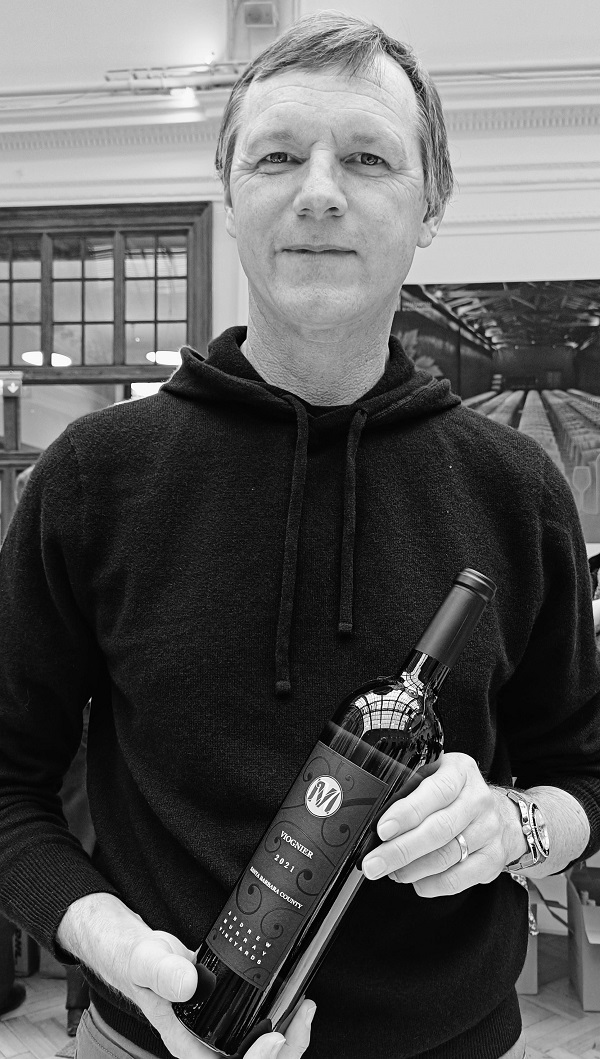
He pours me a sample. His Rhône varietals are highly acclaimed, and this Viognier lives up to its reputation. Before asking about the winemaking, I note that the grapes don’t come from the family estate in Los Olivos, in the heart of California’s Santa Barbara County.
Andrew explains that the Viognier he and his parents, Jim and Fran Murray, planted when they started Andrew Murray Vineyards in 1990 goes into his top Syrahs, Roasted Slope and Watch Hill.
For these Rhône-style Syrahs, the Viognier is left longer on the vines and picked with the Syrah at around 26-27 °Brix (red wine level) when, according to Andrew, it becomes “a character of itself – it’s so honeyed and sweet but it’s nice because at a very small percentage it gives a lot of Viognier character”. About 8% by weight goes into Roasted Slope and up to 6% boosts Watch Hill’s “texture, aromatics and colour”.
“Colour?” I query.
Yes, Andrew explains, the bitter phenolics from the Viognier’s skin help to fix the colour of the Syrah. “There are more phenolics in the Viognier than in the Syrah, so it helps strengthen the colour of the wine and make it a higher colour over a longer period of time,” he says.
'Viognier is... not as good as it should be in the US'
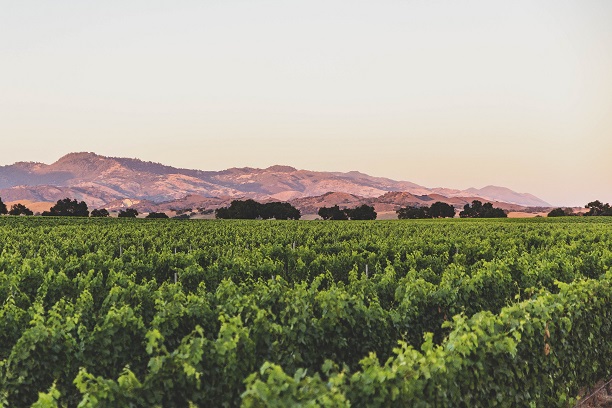
The sought-after Roasted Slope and Watch Hill are co-fermentations of Syrah and Viognier using whole berries and “a fair number” of whole bunches (up to 25%) from both varieties. “I love the stems as well because they are also very ripe by the time they are picked,” Andrew says, before returning to the wine in our glasses and explaining the problem with many Californian Viogniers: “I think Viognier is planted in all the wrong places which is why it’s not as good as it should be in the US. People tended to plant it willy-nilly. They focus on Chardonnay and Pinot Noir or Syrah and they’re like, ‘Oh, we can grow a little Viognier there because it’s not too hard’. But Viognier in the Rhône Valley is grown in the extreme north – it’s very cold.
“What we found is our estate, which is very capable of ripening Syrah, grows a beautiful Viognier – but this Viognier is better mixed with Syrah because it gets really, really ripe – it’s a really oily, rich Viognier. We love that style but we wanted to have balance, minerality, natural acidity – a little more Condrieu-like than is typically produced in California. So, our varietal has a lot of that California aromatics: if you put your nose in the glass, it’s very fruit forward – very peachy, very apricotty; it’s very evocative but it has a really incredible balance and that’s because we source from two vineyards that we farm. One is in the Santa Maria Valley, which is a very cool region north of us, and one is in Santa Rita Hills, which is west of us. Both places grow arguably better Viognier than we do ourselves.”
In 2021, the yields from the Zotovich vineyard in Santa Rita Hills were so tiny it’s mostly Santa Maria Valley fruit in my glass. “We label as Santa Barbara County so that we have the flexibility to blend up the best finished wine possible,” Andrew comments.
Both the 2022 vintage, which is already sold out in the USA, and 2023, which will be released later this year, have some Santa Rita Hills grapes.
The winemaking
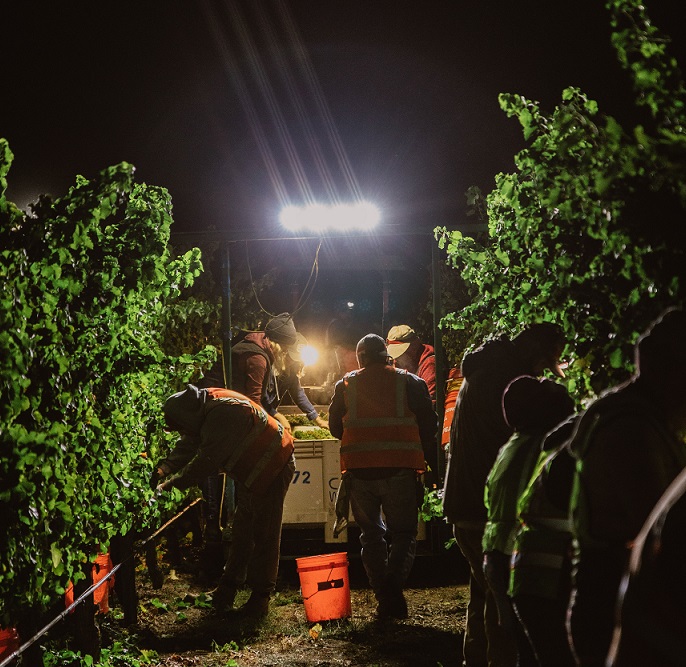
The grapes from low-yielding clone 642 (plus a little from clones 1 and Alban) were picked by hand at night (at 11pm and 4am), so they arrived cold.
The juice foregoes sulphuring on arrival and only gets a small dollop post-fermentation and pre-bottling.
“What we have found is that the earlier you add sulphur the more it binds, so you get a higher total sulphur by the end and a much lower free. So, to get a better free, you’re always having to chase your tail. The less you add upfront, the less you need to add at the end to get a higher free sulphur,” he says, adding: “We rely on high-quality harvest, physical and automatic sorting, and very gentle pressing.”
'The earlier you add sulphur the more it binds'
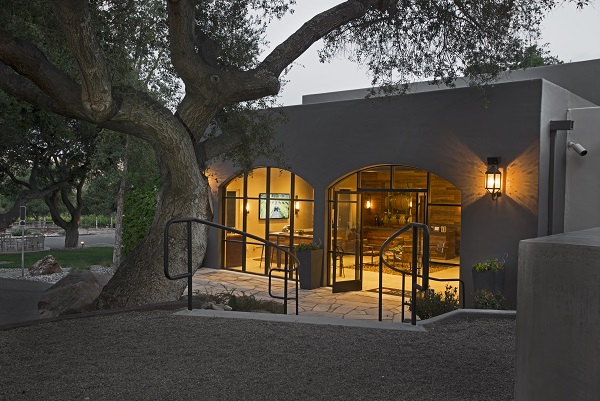
The Viognier is whole-bunch pressed and left to settle in a tank for a couple of days at 38-40°F (3.3-4.5°C). After racking off the gross lees, the juice is inoculated for a very cold (10°C/50°F) and slow fermentation in jacketed stainless-steel tanks “to preserve the varietal’s natural vibrancy and purity”. Because the fermentation is so low and slow, Andrew inoculates with a very “boring yeast” from the Rhône Valley. He says it’s so boring he can’t remember the name.
The fermentation lasts about 40 days. “We want to hold all those esters, those crazy aromatics in the wine, the textures,” Andrew continues.
Towards the end of fermentation, the wine is transferred to neutral Burgundy barrels. “After fermentation we will add 18-22ppm sulphites and then we keep the barrels in our coldest cellar to inhibit MLF” – keeping the varietal’s “natural acidity – the really salty malic acid”.
The wine remains in the barrels for eight to nine months without any further racking “to flesh the wine out, while contributing grace and elegance”.
It is then sterile filtered. “This allows me to have very low sulphites,” Andrew says.
The wine is bottled with free sulphur of 18-20mg/L and total of about 45mg/L.
He says: “I don’t trust wines that aren’t sterile filtered and are shipped around the world. All my reds go through malo so they are very stable.”
The bottles are held back for at least nine months before release.
The result is a rich, oily, balanced Viognier that sells for $30. The dominant flavours and aromas are of apricots, peaches, and honey, with a subtle citrus edge. In the mouth, the wine feels lush and rich with an incredibly long finish. “I am infinitely proud of this wine and the potential to continue to pursue cool-climate Viognier,” Andrew says.
Annual production is relatively small – 3,600 to 6,000 bottles. “But it is something we are known for even though most California producers don’t strive to be known for their Viognier.”
The Viognier still comes in Bordeaux bottles to remind them how little they knew at the beginning of this journey.
Andrew’s journey
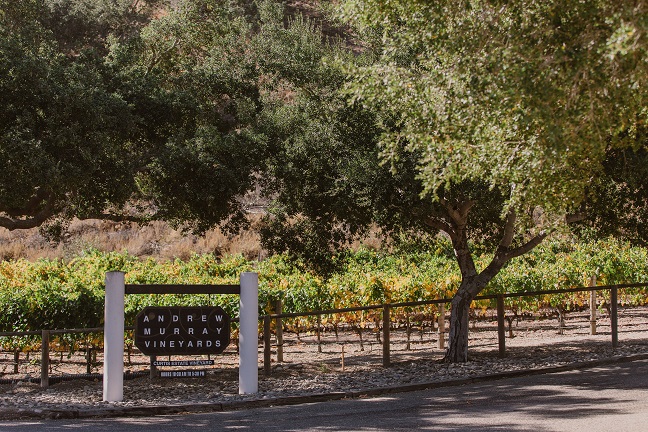
Andrew’s winemaking philosophy is fundamentally simple and has been informed by 30 years of experience in France, Australia, and California.
He recalls his first encounter with the grape variety, in Burgundy, as a 15-year-old lad. After a rash of white Burgundies, he tried a Condrieu in a restaurant called Espérance – which is now the name of one of his red blends, celebrating his epiphany moment. The Condrieu was “peachy and apricotty and obvious,” he remembers. “I feel it should be everyone’s first wine to draw you into the world of wine.”
And that’s how Andrew got sucked in.
Andrew Murray Vineyards’ website sums up his career rather beautifully: “Leaving his UC Berkeley palaeontology studies behind, he pursued his new mistress, Syrah, with an internship in Australia (starting in 1992). His three-month tryst evolved into a 15-month romance with the famed Australian Shiraz. Returning to the States, he earned a bachelor’s degree in viticulture and oenology from UC Davis’ renowned wine program, then founded his eponymous Santa Ynez winery and vineyard. Andrew and his family were drawn to the natural beauty, climate, soils and topography of Santa Barbara County. It all reminded him of his travels through the Rhône Valley where he first fell in love with the notion of winegrowing while just a teenager.”
Andrew Murray Vineyards was founded in 1990 when his parents sold their southern California restaurants and ‘retired’ to 200 acres of fertile soil in the Santa Ynez Valley. The original idea was to be a Viognier specialist, as he believed “it was the next Chardonnay”. But the Viognier cuttings from a winery in Sonoma were misidentified and turned out to be mostly Syrah. As Andrew confirms: “The first vineyard that we planted – the Roasted Slope – was actually Syrah, thank God. But we didn’t know it for three years – when we got our first veraison! So, I make almost exclusively Syrah even though we founded ourselves to make Viognier.”
The winery’s first vintage was 1993. When the vineyard was sold in 2006, so his parents could properly retire, Andrew obtained leases for blocks of vineyards throughout California’s Central Coast for wine production and established his new Los Olivos winery in a former brewery.
As the tasting in London finishes, Andrew informs me that white Burgundies became his favourite wine later in life. “It took me a long time to figure them out,” he says.


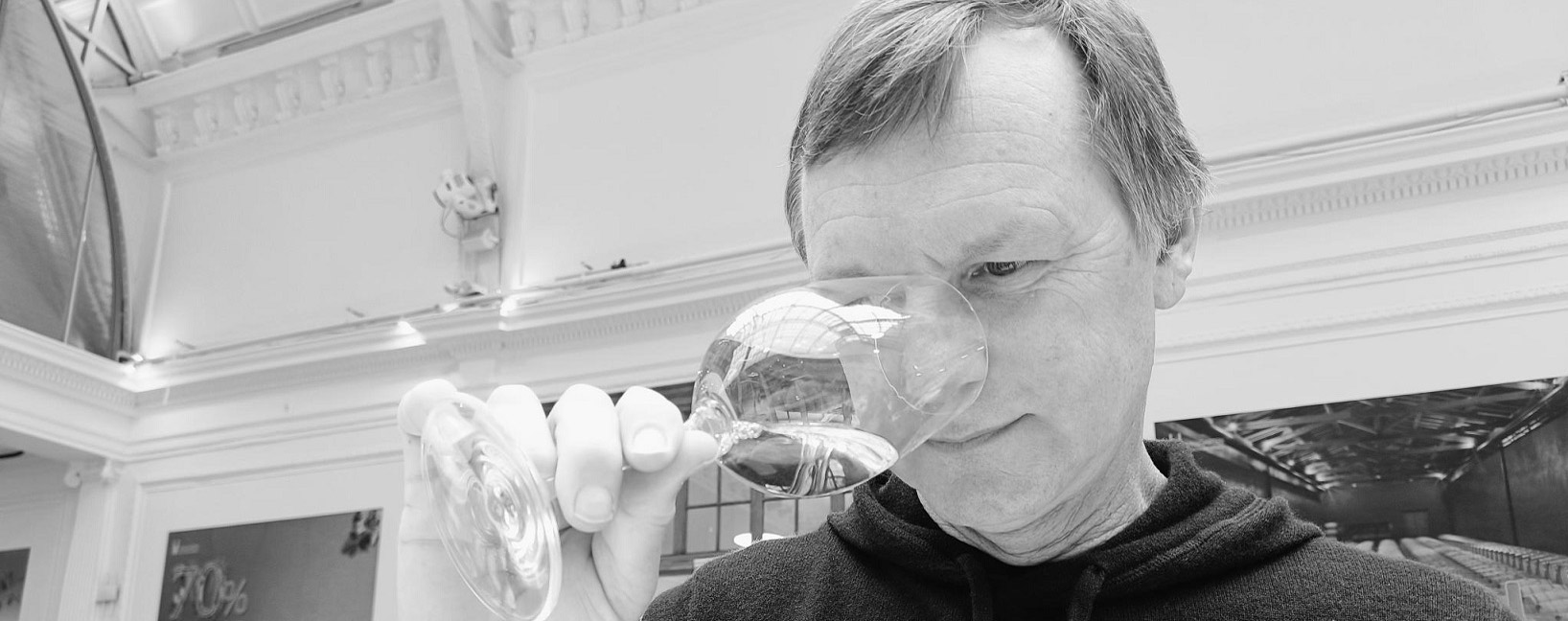










.png)






